Indonesia: Java, Bali, and Komodo Islands - September 10 - October 2, 2017
Part One - Java
Page Three - Yogyakarta area in Java

Child seen on the street riding a bike
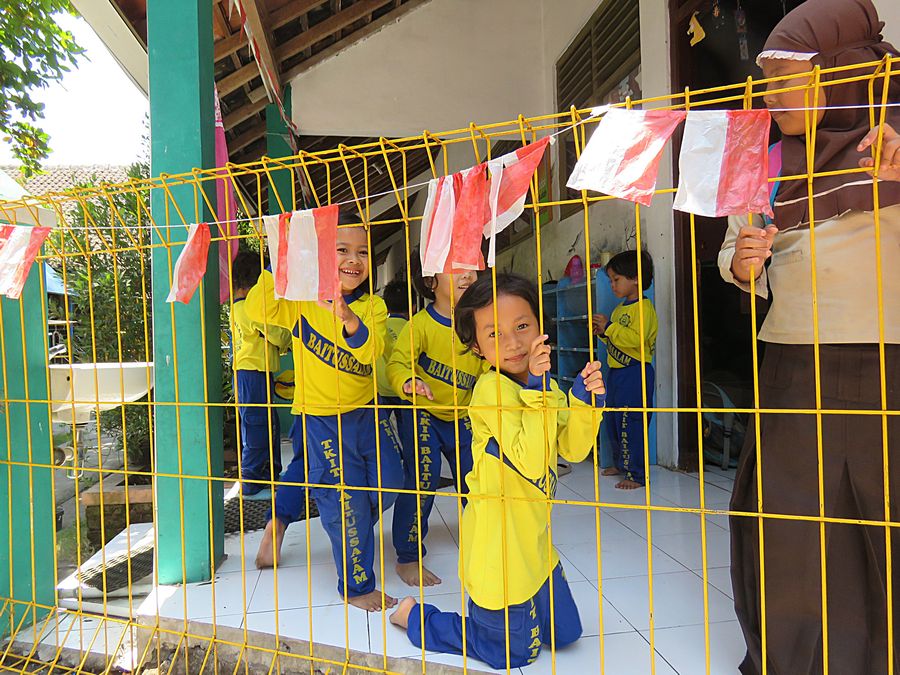
More school kids excited to see us. Teacher on the right.
Near Prambanen Temple

Typical homes with clothes drying outside.
Taken from our van. After visiting Prambanen Temple,
we headed to Sekar Rinonce, a local foundation dedicated to
preserving the art of Batik.
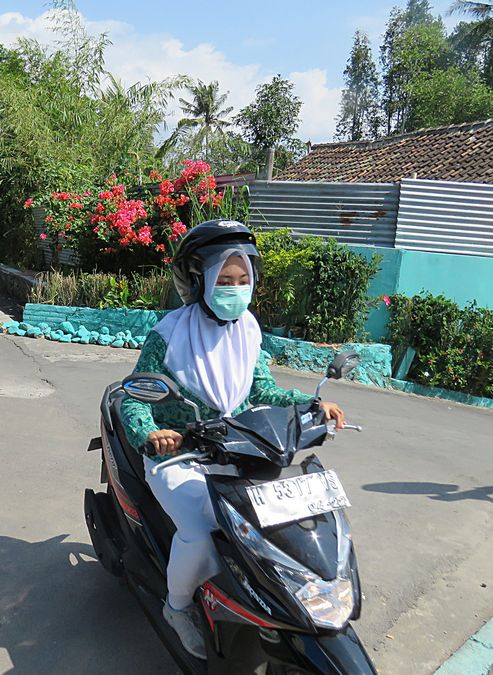
Muslim woman with helmet and mask protecting her face against
pollution.

At Sekar Rinonce, batik foundation
Batik is is a technique of wax-resist dyeing applied to whole cloth,
or cloth made using this technique.
Batik is made by drawing dots and lines
with a spouted tool called a canting or by printing with a copper stamp.
The applied wax resists dyes and therefore allows the artisan to color selectively
by soaking the cloth in one color, removing the wax with boiling water,
and repeating if multiple colors are desired. It is complicated, but the result is beautiful.
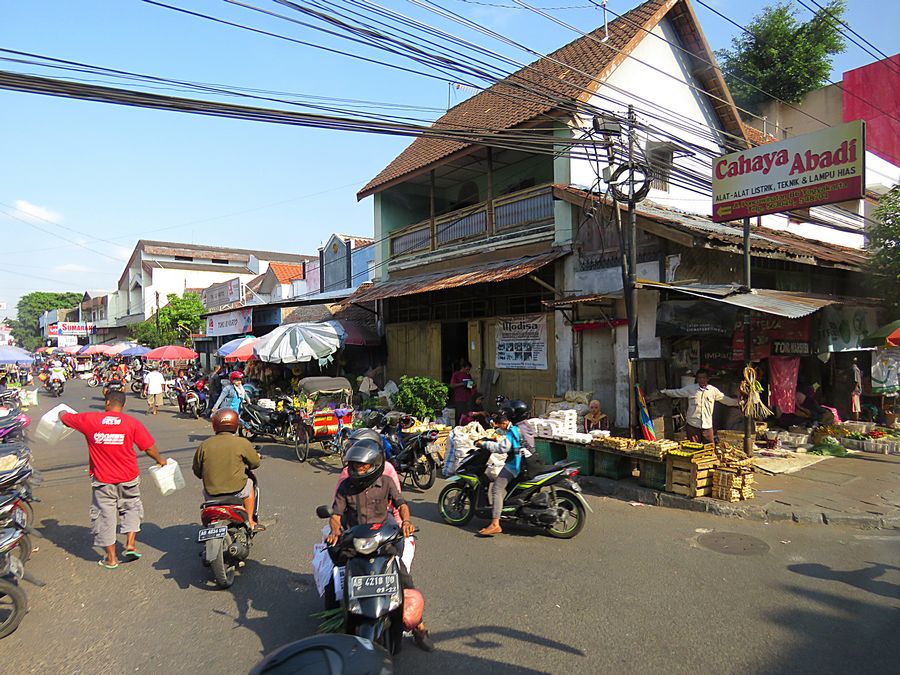
Typical street scene, with motorcyclists, multiple street vendors with
umbrellas to protect against the hot sun.
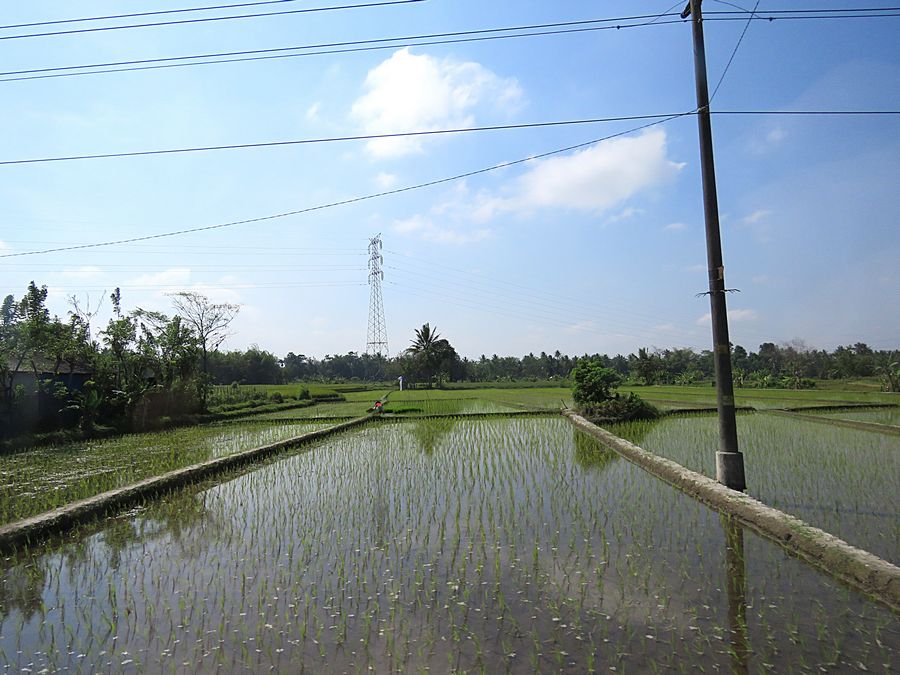
Another rice field
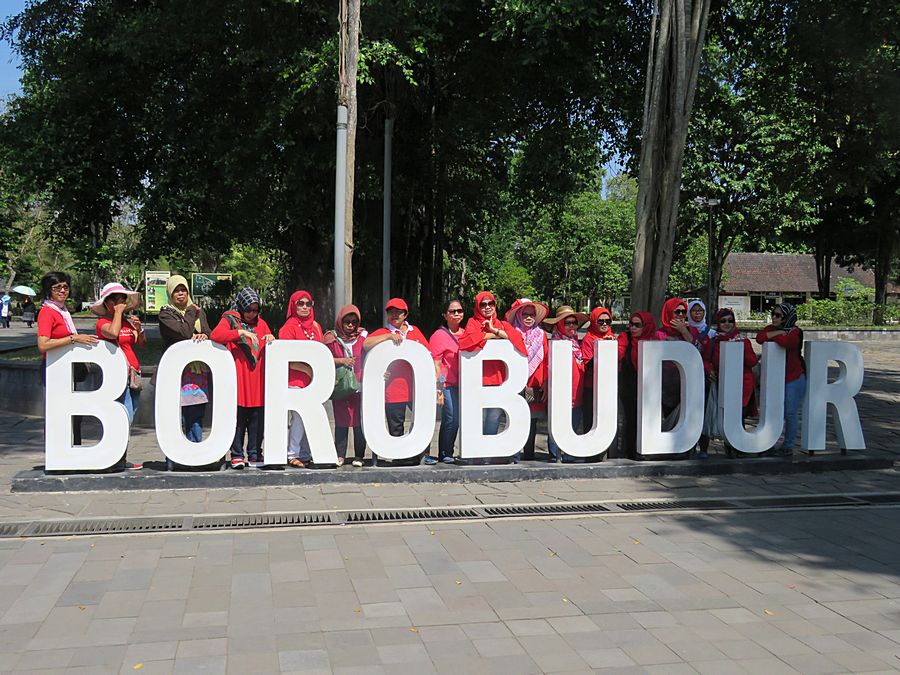
At Borobudur, a 9th-century Mahayana Buddhist temple in Magelang,
Central Java, and the world's largest Buddhist temple. The temple
consists of nine stacked platforms, six square and three circular, topped
by a central dome. It is decorated with 2,672 relief panels and 504 Buddha
statues. The central dome is surrounded by 72 Buddha statues, each seated
inside a stupa. Here is a group of largely Muslim women visiting this
famous Buddhist site having a group photo taken at the Borobudur sign in front.
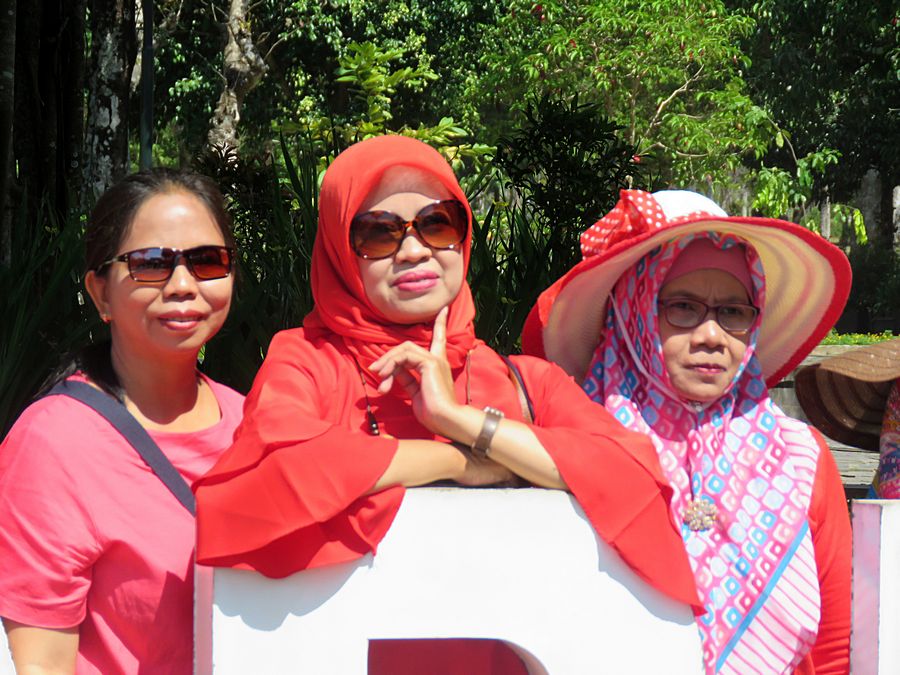
Closeup of some of the Indonesian tourist group
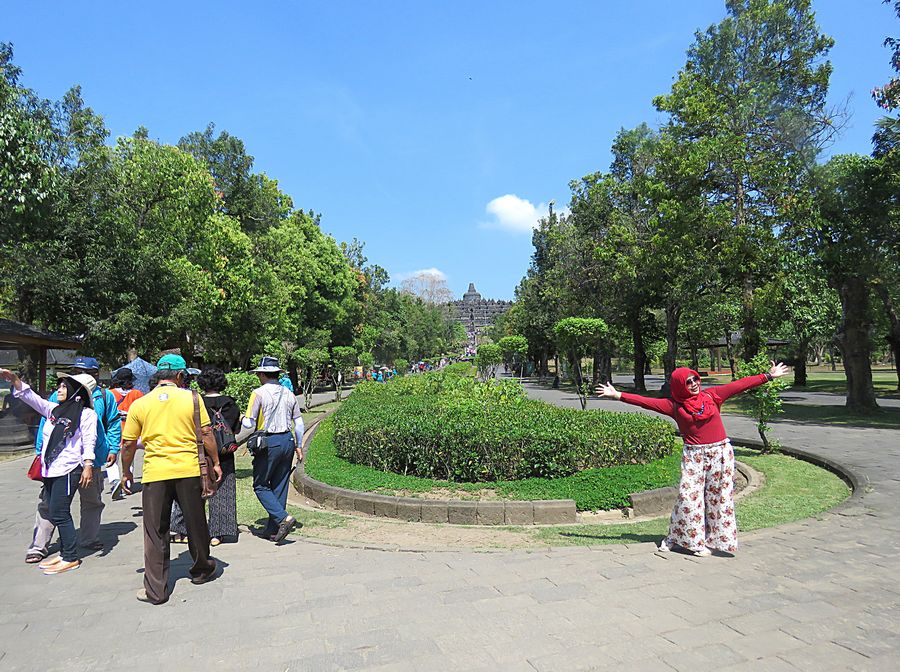
Built in the 9th century during the reign of the Sailendra Dynasty, the temple
design follows Javanese Buddhist architecture, which blends the Indonesian
indigenous cult of ancestor worship and the Buddhist concept of attaining
Nirvana.The monument is a shrine to the Lord Buddha and a place for
Buddhist pilgrimage. The pilgrim journey begins at the base of the
monument and follows a path around the monument, ascending to the top
through three levels symbolic of Buddhist cosmology: Kāmadhātu (the world
of desire), Rupadhatu (the world of forms) and Arupadhatu (the world of
formlessness). The monument guides pilgrims through an extensive system
of stairways and corridors with 1,460 narrative relief panels on the walls and
the balustrades. Borobudur has the largest and most complete ensemble of
Buddhist reliefs in the world.
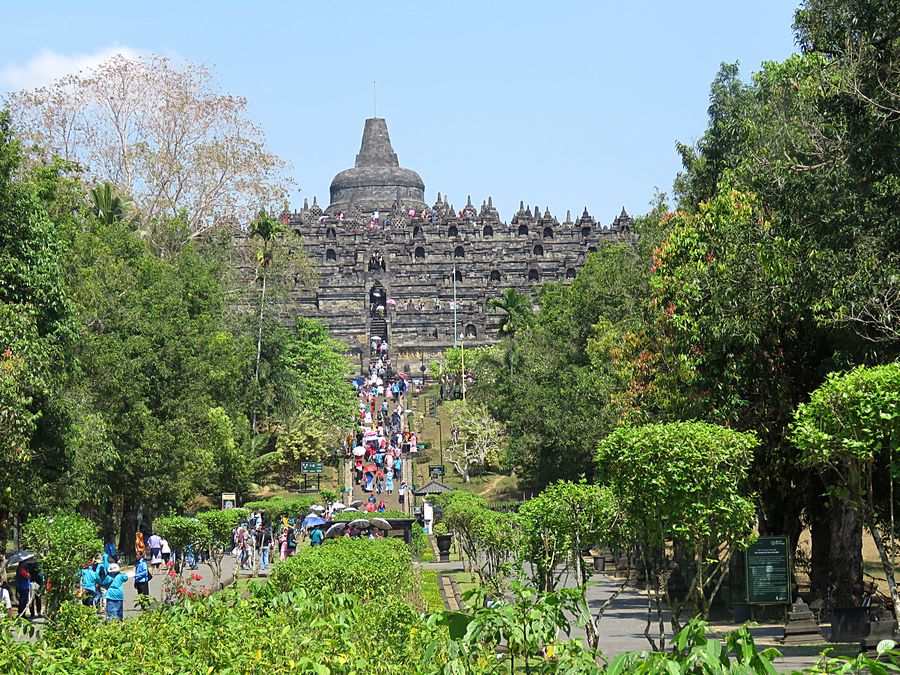
Stairs leading to the Borobudur complex
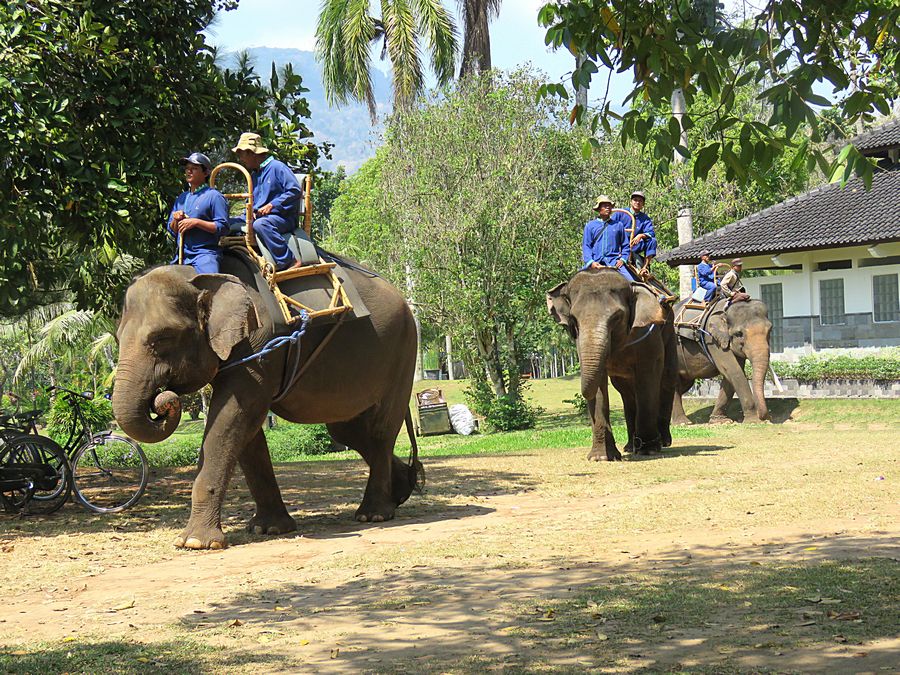
Handlers riding Asian elephants near the Borobudur Temple
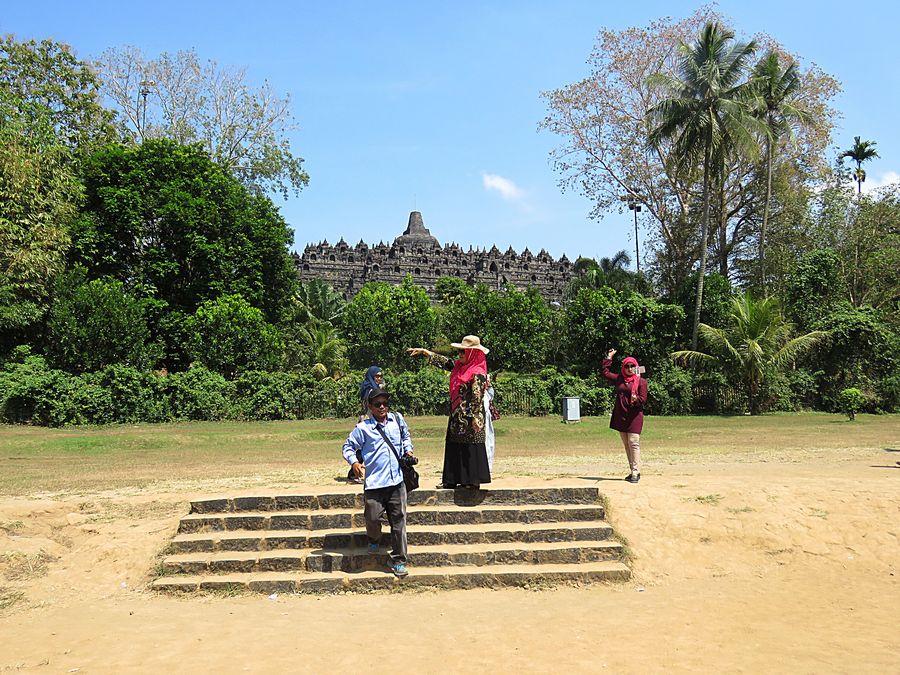
Another view of Borobudur, with a woman taking
a selfie on the right. Smart phones are ubiquitous
in Indonesia like they are elsewhere.
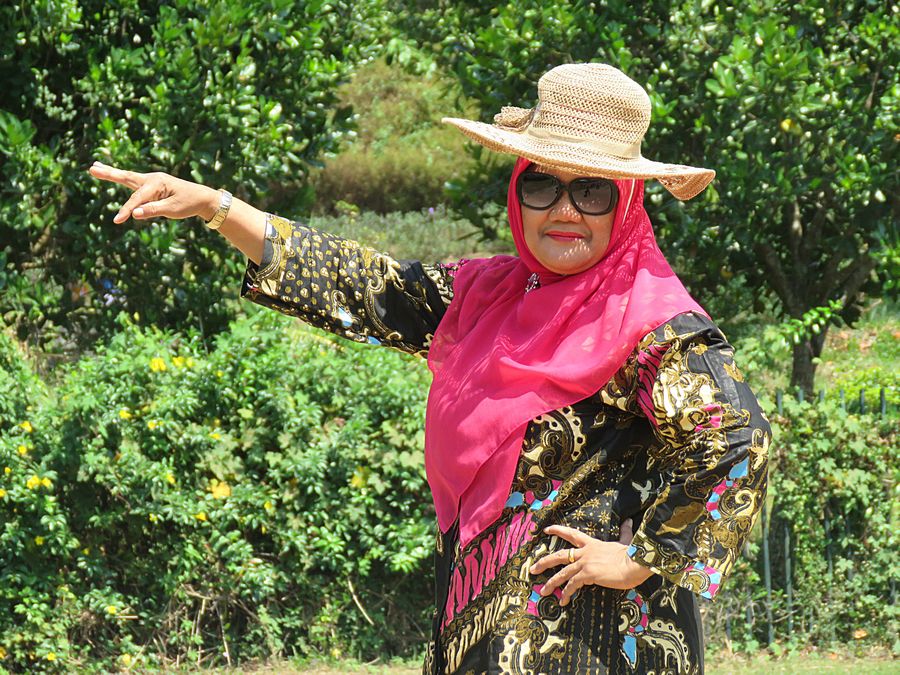
Closeup of an Indonesian woman having her picture taken at Borobudur
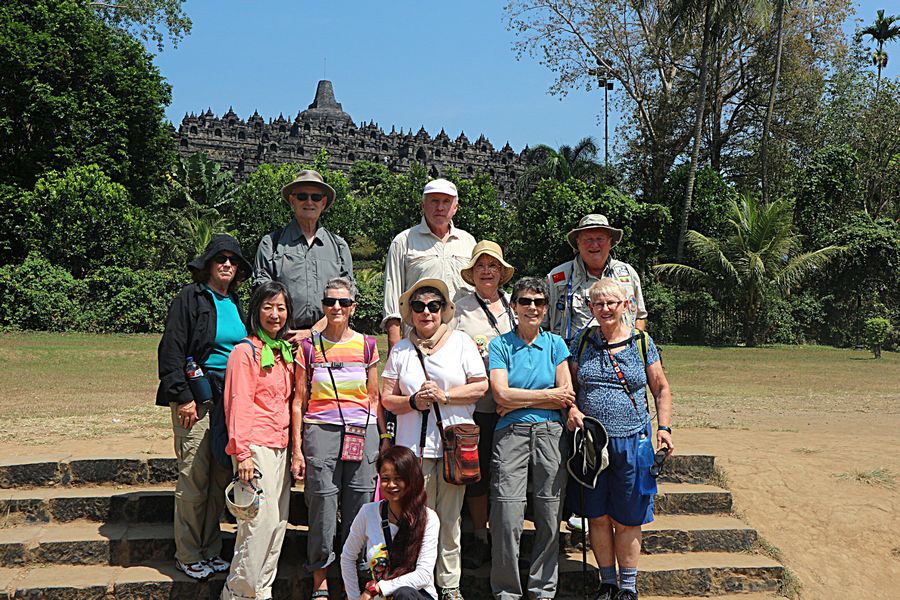
Group at Borobudur: Guide Susi in front, Karen, Berdi, Steve, Shirley, Iris,
Craig, Elaine, Pat, Jack, Joy. The rest of the group had gotten up extra early
to try to see the sunrise at Borobudur, but it was cloudy.

Borobudur lay hidden for centuries under layers of volcanic ash and jungle
growth. The facts behind its abandonment remain a mystery. It is not known
when active use of the monument and Buddhist pilgrimage to it ceased.
Sometime between 928 and 1006, King Mpu Sindok moved the capital of the
Medang Kingdom to the region of East Java after a series of volcanic
eruptions; it is not certain whether this influenced the abandonment, but
several sources mention this as the most likely period of abandonment.

Carvings on Borobudur
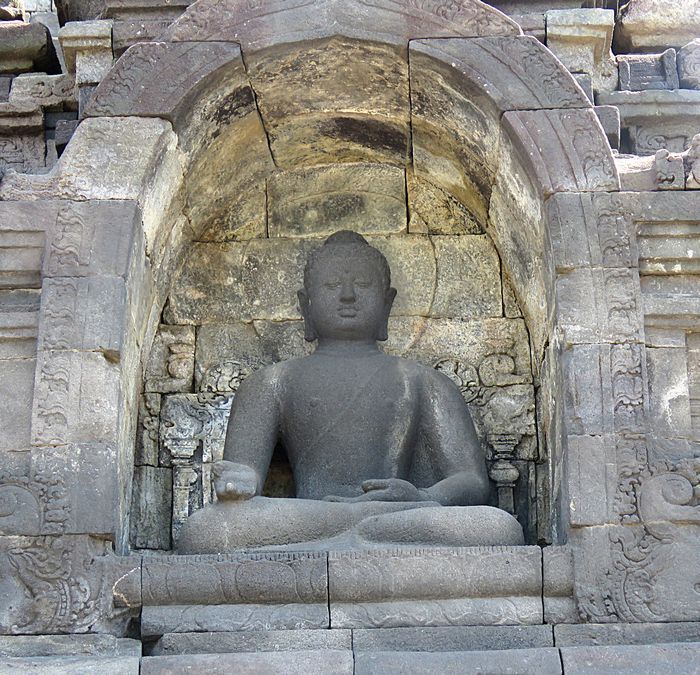

View of nearby mountains from Borobudur on the way
to the top of the temple

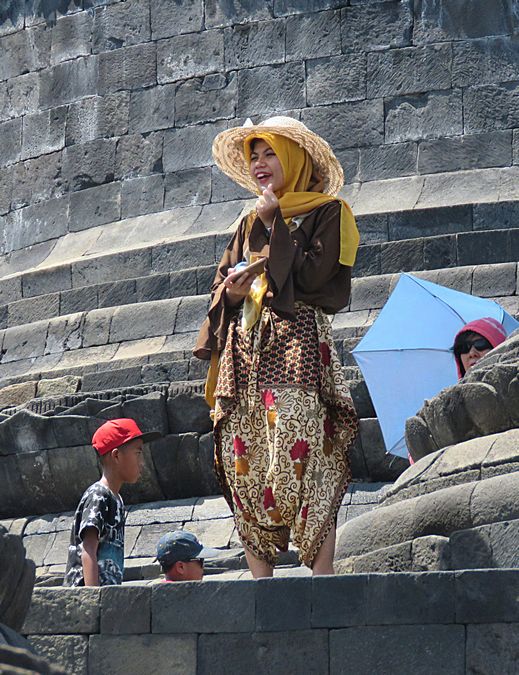
Indonesian tourist at Borobudur Buddhist Temple, near the top
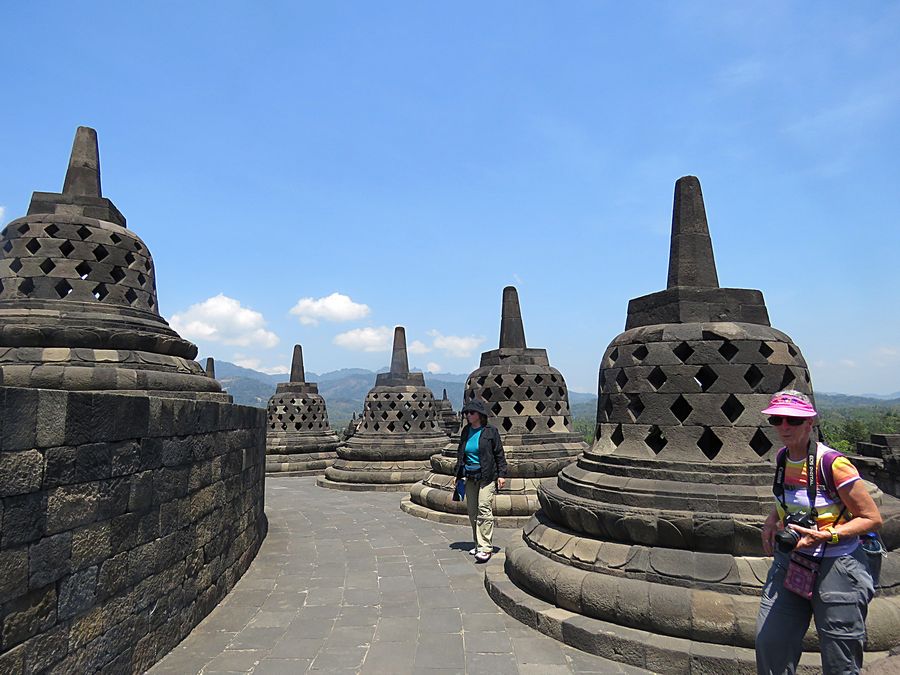
Karen and Shirley near the top of Borobudur

Landscape view from Borobudur
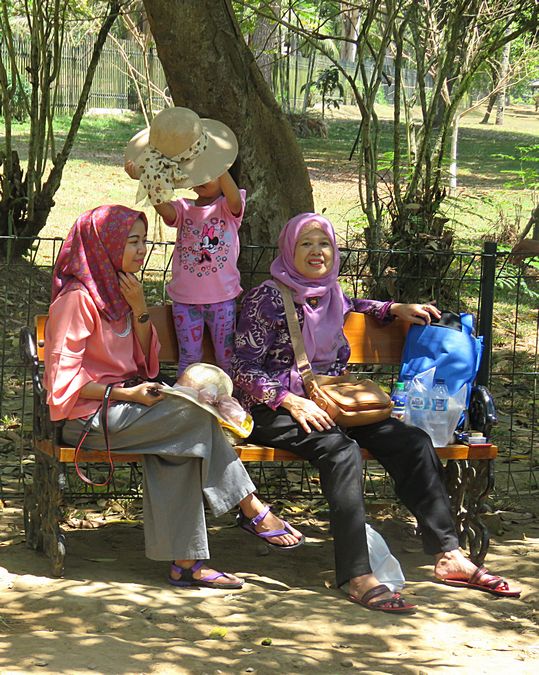
Indonesian tourists relaxing after touring Borobudur
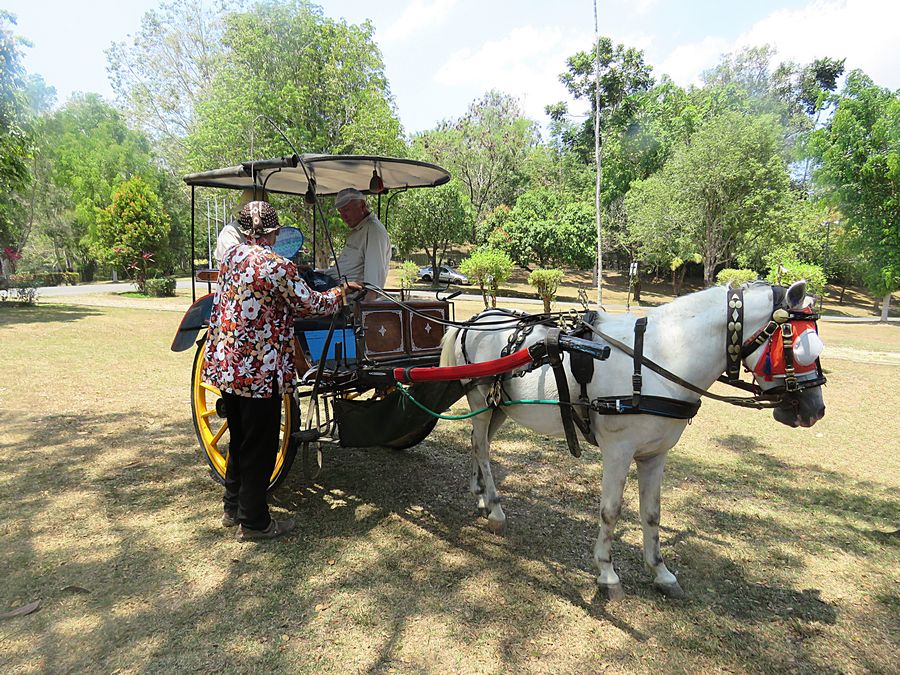
We took horse-drawn carriages to a rural village from Borobudur.
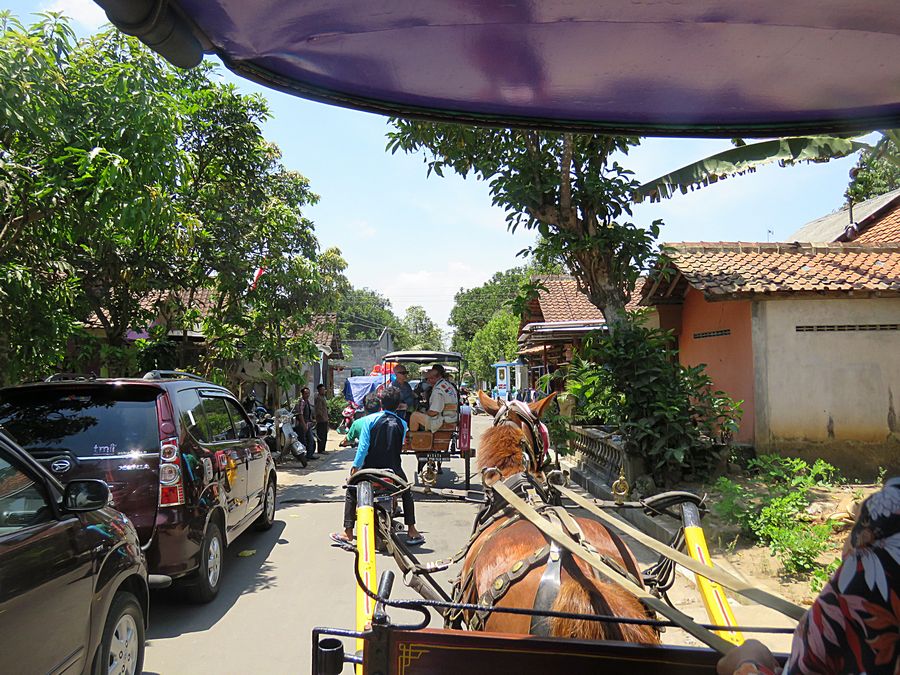
Riding through a local village
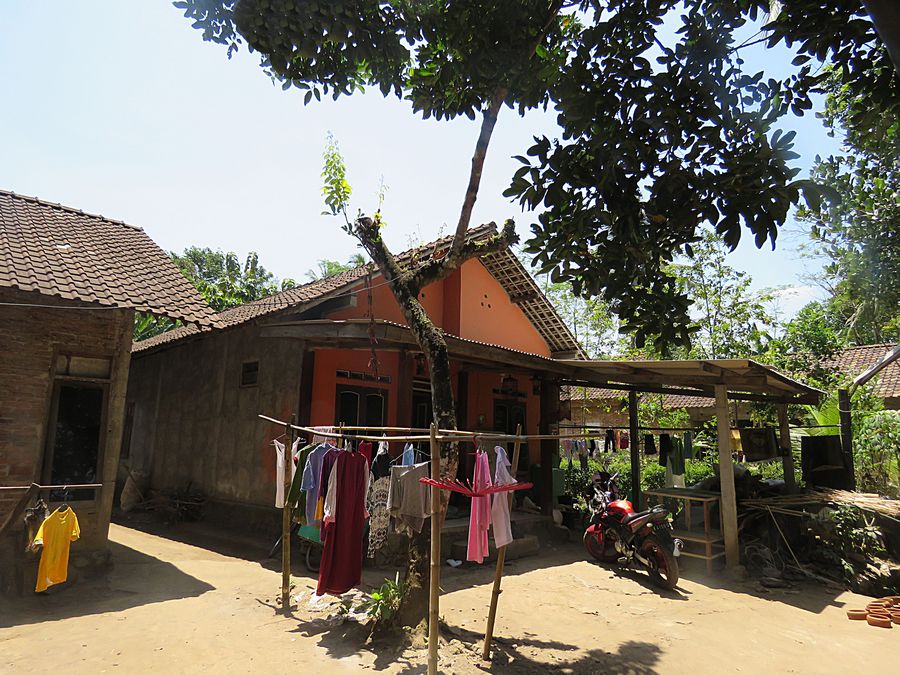
Typical rural home in Java
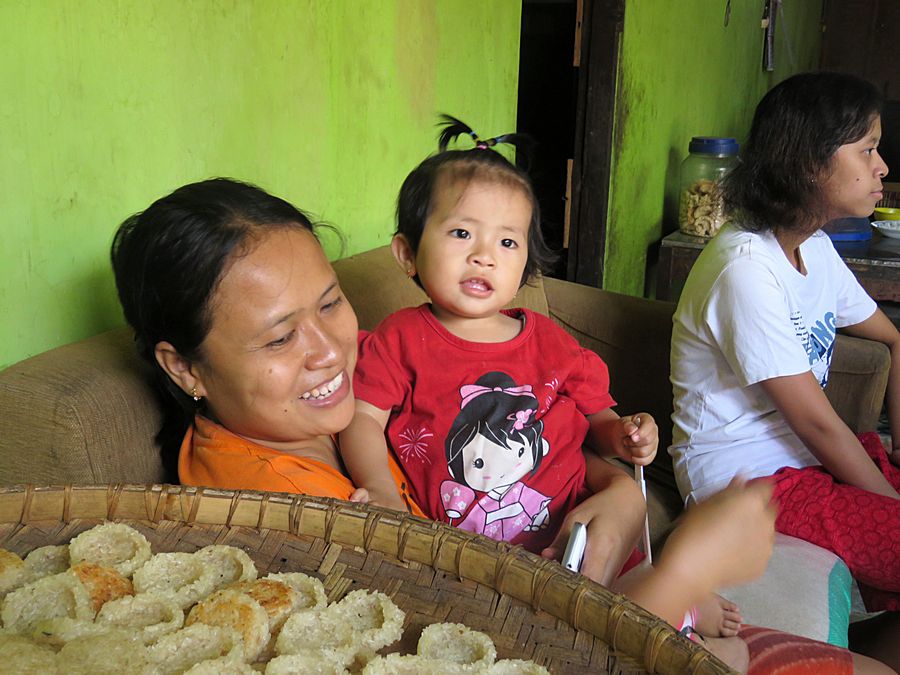
We stopped at this home where the female head of the household
made rice cakes.
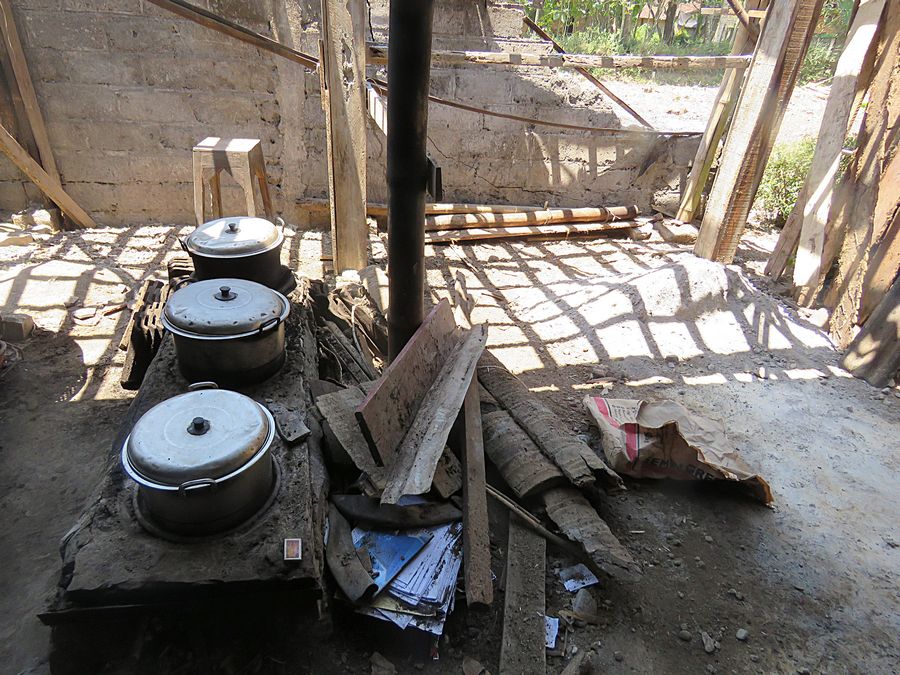
Cooking area of the home. Typically in an outdoor area.
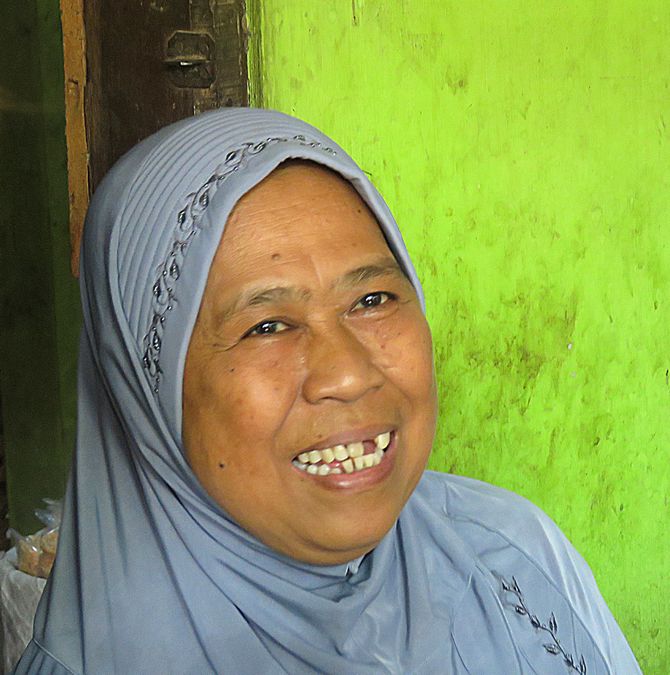
The wife and rice cake maker
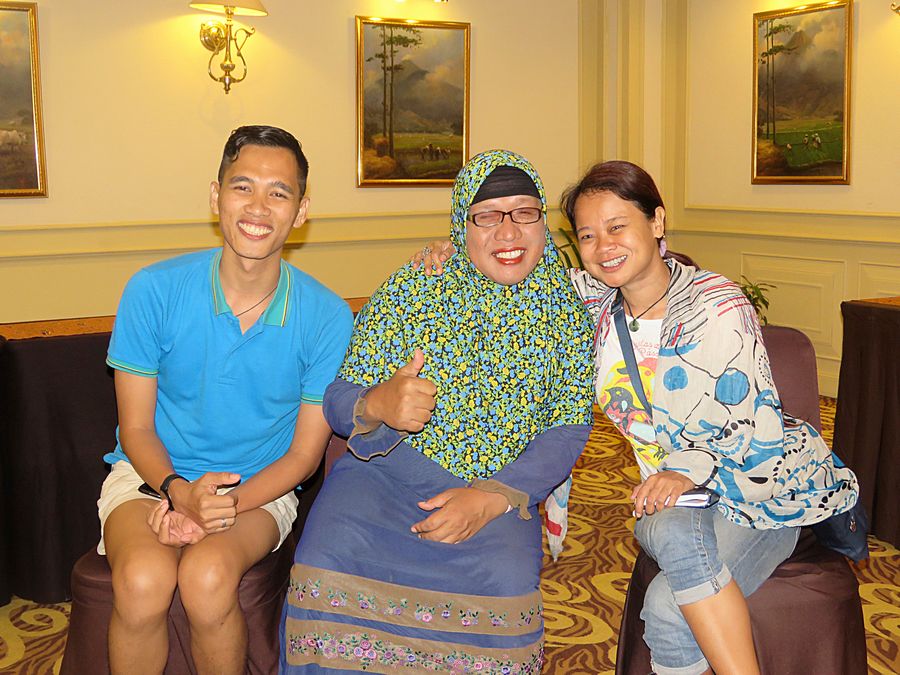
In the evening, some of us listened to a talk by a Muslim transgender person,
whom tour leader Susi knew. It was unusual for us to see a transgender person dressed
in Muslim attire. She said when she realized her identity and told her parents
when she was a teenager, her parents and brother kicked her out of the house.
She became a sex worker to survive. Eventually, the threat of HIV/AIDs made her decide
to change her life. She started a shelter for other transgender people. She now teaches and
speaks to many groups, including international LGBT organizations.
Her parents are
dead, but her brother now accepts her. She has not had any
gender surgery, because she decided to accept what God gave her.
The
person on the left is a volunteer at the shelter.
Link to Part Two, Page One - Bali, Indonesia
Pat's Home Page